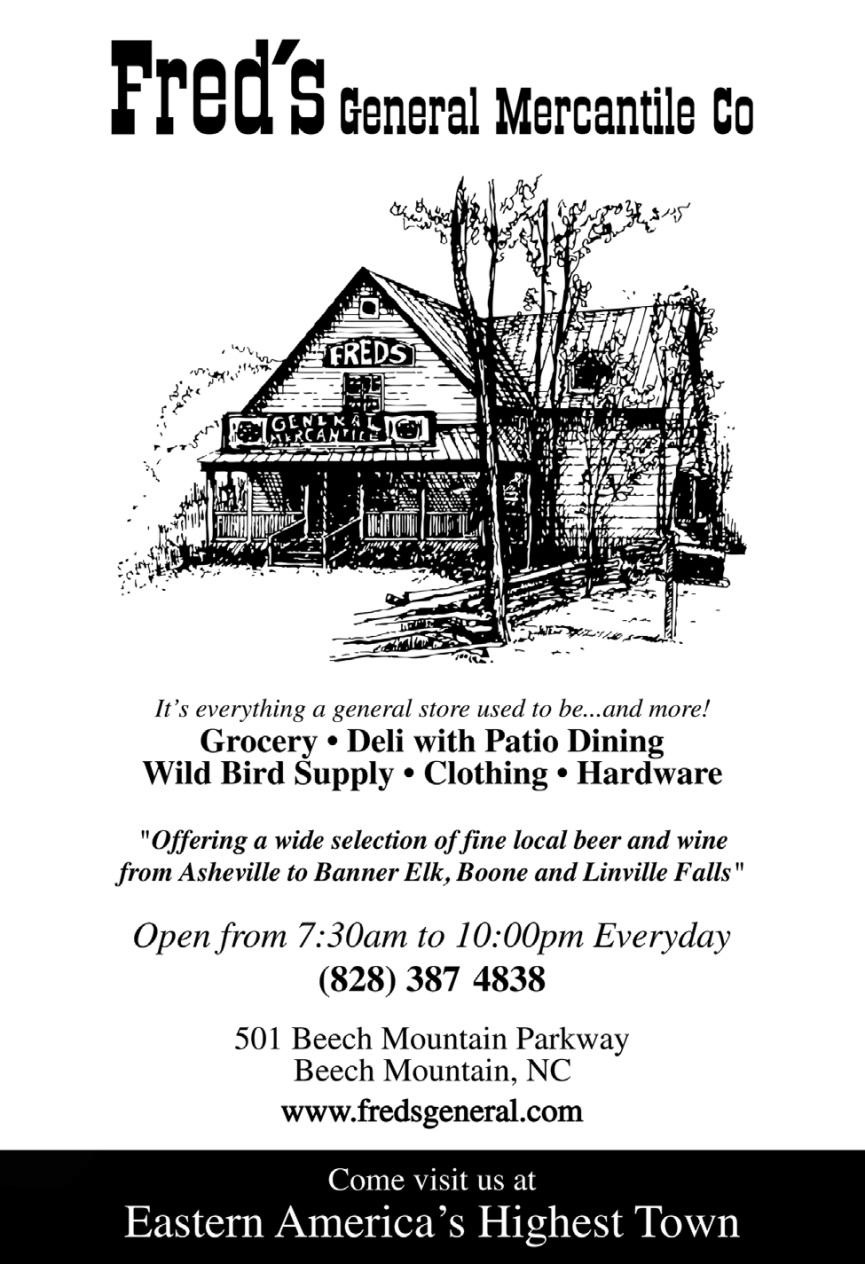WOOLLY WORM GAZETTE
THE OFFICIAL GUIDE TO THE WOOLLY WORM FESTIVAL



THE OFFICIAL GUIDE TO THE WOOLLY WORM FESTIVAL


Wooly, wandering, two-toned worms are wiggling their way out of the woodwork all over the High Country to warn us of winter weather. The time has arrived for another Woolly Worm Festival.
The festival, which has been going strong in the High Country since 1978, has transcended its local, smalltown roots and firmly planted itself, much like worms on a string, upon the national stage.
Festival co-founder Jim Morton, who spent his first autumn in the area in 1973, was enamored by the local legend of the woolly worm as a weather forecaster. According to folklore, the 13 segments of a woolly worm correspond with the 13 weeks of winter. Black segments are said to indicate severe weather, while orange or brown segments are indicative of milder weeks.
Morton put the worm to work in Banner Elk when he, along with a group of local merchants, was tasked to find an annual event to bring to the area.
While Morton had faith in the little worm’s accuracy, not all worms tell the same story. Some of the High Country’s woolliest denizens warned of severe winter weather with their solid black coats. Other, perhaps more optimistic worms in the same area would have more brown on their backs, indicating that the winter would be mild.
While all the worms were woolly, not all the worms could be right, so Morton set out to find only the best wormy weathermen by means of a race, of course.
It stands to reason, at least to all of those learned in worm lore, that the fastest, most fit woollies will naturally be the most able forecasters of the weather.
So it has been ever since. Woolly worms and their handlers have flocked to Banner Elk every year from all over the world for the chance to win the right to warn the High Country about its upcoming season.
Banner Elk’s small population swells during the festival. More than 20,000 people have attended the past few events. People flock from all over the country, and not just to gratify the olympian ambitions of their woolly worms. The Banner Elk festival has something to offer to the whole family.
In recent years, more than 170 art and craft vendors have been present at the event. Prospective vendors are juried by the Woolly Worm Festival Committee so that only the best handmade items are allowed to be sold. No buy and resell vendors are allowed at the festival.
The festival, while now a mega-modern woolly worm event to rival the very woolliest the world has to offer, had humble beginnings. The first Woolly Worm Festival took place at Banner Elk Elementary School on a cold and windy day. The festival organizers discovered through their groundbreaking worm research, that woolly worms, like people, aren’t usually too interested in recreational climbing when it is too cold.
Unfortunately, it is currently impossible to impress the importance of the race upon the woolly worms who,
while they are endowed with certain meteorological abilities, resolutely don’t speak English.
To combat the cold, which typically hasn’t totally taken hold over the High Country by mid-October, handlers have now learned that worms can be motivated by hot air blown through a straw.
Woolly worms, many festival attendees are surprised to learn, are not actually worms at all, but are the caterpillar larvae of the Isabella Tiger Moth. The worms, like many Hollywood actors gone wrong, prefer to be known for their adolescent work rather than any perceived grown-up shortcomings (although, waking up and finding that you’ve grown wings must be nice).
The worms that festivalgoers race in the fall aren’t just adept at predicting the winter, they are also well equipped to survive it.
Woolly Worms outlast the winter in hibernation. Instead of burrowing deep underground like many animals, they choose under rocks, fallen foliage or logs. The worms produce a chemical called cryoprotectant that allows their bodies to totally freeze solid with no adverse effects. Some worms are known to survive as many as 14 winters using this method.

When it decides it is ready and the spring thaw comes, the worm that stuck itself in the freezer emerges as a moth and spends its newly winged life fluttering around lamps and streetlights remembering the glory days when it was a weather-forecast-ing festival star.
Attempts to found moth festivals have been met with less success than the ground based competition.
Entering its 46th year, the Banner Elk Woolly Worm Festival will be held in downtown Banner Elk Saturday and Sunday, Oct 21 and 22. Races will take place from 9 a.m. to 5 p.m. on Saturday and 9 a.m. to 4 p.m. on Sunday.
Saturday’s grand prize winner will go home with $1,000, while Sunday’s races, which are typically smaller, will award a grand prize of $500.
For more information, call the Avery County Chamber of Commerce at (828) 898-5605 or click to www. woollyworm.com.






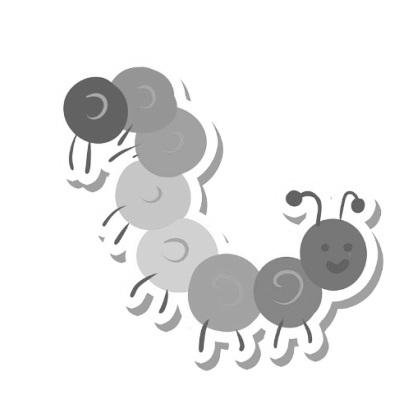

 By Christian Gardner
By Christian Gardner
It doesn’t matter if this is your first Woolly Worm Festival or if you’re a Festival veteran, this numbers guide has all the info of numbers you need to know before the third week of October and this year’s Woolly Worm Festival returns to downtown Banner Elk.
0
- Free admission for children 5 and under.
1 - The number of worms that get to predict the High Country’s winter weather annually.
2 - The number of days the festival is held.
5
- The price of admission in dollars for kids 6 to 12 years old.
8
13
- The price of admission for adults.
- The number of sections on a wooly worm’s body which is used to predict the weather.
25 - The number of worms that are entered in each heat race.
46 - The number of years the Woolly Worm Festival has operated in Banner Elk.
170 - The number of vendors on hand for the festival.
500 - The cash prize amount for being crowned overall champion of Sunday’s races.
1,000- The cash prize total for the overall winning worm of Saturday’s festival races.
20,000- Estimated number of attendees expected to visit Banner Elk over the course of the weekend.
(828) 898-5605 - Phone number of the Avery County Chamber of Commerce for any inquiries regarding the 46th Annual Woolly Worm Festival.

Each year the annual Woolly Worm Festival has a plethora of woolly worms that squirm and battle their way to the top to become the one worm with the distinction of being the woolly that predicts the weather for the upcoming winter season. There can only be one woolly worm that can claim top honors, and every worm tries to get every advantage they can get.
Organizers of each year’s Woolly Worm festival want the races at the festival to be as good and fair of a competition as they can make it, therefore there are

a number of ground rules and regulations that are set in place for worms and owners to adhere to.
For those wishing for their worm to be eligible for the competition, there is a $5 entry fee. Owners of worms also must have a name for their would-be woolly champion. Festival organizers want the racers to know that the more unique the name the better, but that names must be respectful to the worm and all attendees of the event.
Only genuine woolly worms will be allowed to compete. Festival organizers will not make any exceptions or modifications to the worms which are allowed. To be sure that there is no mistaking in identifying your woolly worm as the original, take a moment to check that it has 13 segments and a color variation of brown and black. If the worm has fewer than 13 segments you might have an imposter.
Also, it’s important to note that participants should register earlier because there are a maximum number of 25 spots available on the big board for each race heat. Once every woolly worm is registered, it’s off to the races.
The number of heats are determined by how many competitors there are, and also by the prevailing weather conditions. At the beginning of the heat, worms are placed at the bottom of a vertical string on the race board, which is designed to have the same texture of milkweed. At the starting signal, worm handlers release their worms. The board, the string, nor the worm are allowed to be touched during the heat. Worm managers are allowed, however, to shout out words of encouragement or to blow on their worms with a straw to provide warm air necessary to propel their protege to victory. Some drivers swear that playing motivational music or giving them a motivational speech also will help to get their worm into the winner’s circle.
The worm that reaches the top first is declared the heat victor by the race judges. One notable race judge is 7-foot, 4-inch NC State basketball and Avery County Legend Tommy Burleson, who has been an official for the festival for more than 30 years.

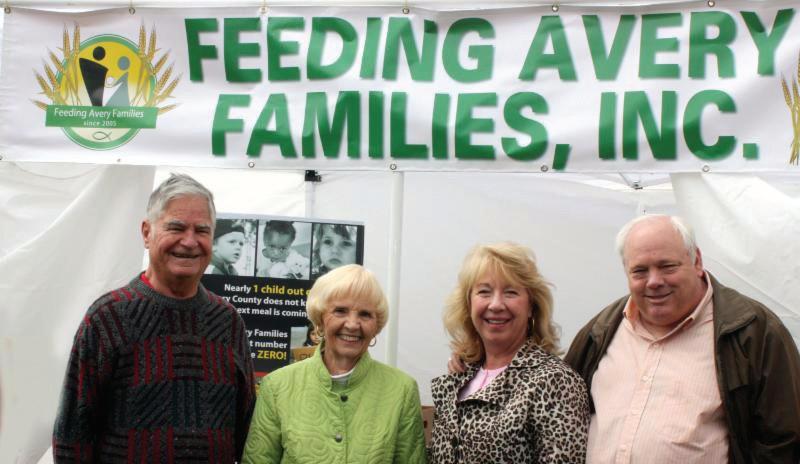 By Christian Gardner | christian.gardner@averyjournal.com
By Christian Gardner | christian.gardner@averyjournal.com
Although woolly worms are small, they tend to make a huge impact in the county. While being great family fun entertainment, the festival is also a great fundraising event for two groups in our region. Banner Elk Kiwanis Club and the Avery County Chamber of Commerce utilize all of the proceeds acquired, minus expenses, to support community projects that will in return aid local families and children.
The event brings in revenue from not just out of county, but out of state, accounting for a significant difference in Avery County. Having an event of this stature provides a great resource for Avery County’s businesses, vendors, nonprofits and governmental organizations. The Woolly Worm Festival doesn’t simply benefit only Banner Elk, but also rewards communities and neighborhoods throughout the county.
According to previous year’s events, earnings are distributed proportionately. The Kiwanis Club will award grants for noble efforts, while the Chamber of Commerce continues to utilize proceeds to provide resources into the county to help maintain and grow local businesses.
Over the last few years the Kiwanis Club has had a distribution rate of approximately $60,000 annually, proving what kind of huge effect such a small creature and festival can have on such a special place of giving and community support.





It’s the time of year in the High Country when the march of the Woolly Worms begins. This familiar and fascinating insect, sometimes referred to as the Woolly Bear, and known to science as Pyrrharctia isabella, the Isabella Tiger Moth, will soon be seen wandering across many roadways.
One of the things that makes the fuzzy, multicolor Woolly Worm caterpillar so interesting is that dating back to Colonial times it has been proposed that the length of the brown and black bands on the caterpillar can predict the severity of winter. Though experts disagree on this, it is a fascinating part of mountain folklore and results in a lot of attention to the bands! Also, (and excitingly, especially for children!) since the caterpillar likes to be on the move, this makes them a great choice for insect races.
The Woolly Worm is very wildly distributed throughout the US and Canada, and festivals held to celebrate its appearance in the fall may be found in many towns. In our area of course the Woolly Worm Festival every October in Banner Elk is looked forward to by children and adults alike. Kids from across our region bring their favorite caterpillar(s) to race and see which is the fastest (and thus predict the winter), while local artists and food vendors provide a very festive atmosphere.
This festival is one of the highlights of our fall season, so making sure it continues is important. One aspect of this is ensuring that the main insect attraction continues to thrive in nature so that it can be the star of the show for years to come. This article provides information about the biology of the Woolly Worm to aid in understanding a few things to keep in mind to make sure one of our most familiar High Country insect continues to thrive.
A member of the Tiger Moth Family of insects, the caterpillar form of the Woolly Worm is much more familiar and seen more than the adult. A relatively small yet handsome orange with black dots, the adult moth is found in our area primarily in the spring, and unless you really look hard for it at night it’s not easily found. After hatching from eggs laid by the female moth caterpillars eat a variety of plants and grow into
the familiar Woolly Worm caterpillar with brown and black “fuzzy” bands. When reaching their largest size, the caterpillars are seen moving across our roadways beginning in September and lasting into the fall. This type of behavior, called wandering by insect biologists, is not uncommon for many insects and is necessary for their survival. Its purpose is for a caterpillar to locate a suitable place to hibernate over the winter before resuming an activity like eating in the spring before forming the pupa from which the adult will emerge. A secluded place of the caterpillar’s choosing under a structure or piles of leaves affords them protection. Interestingly, to survive a potentially cold winter the caterpillar actually makes its own antifreeze.
Using what we know about their biology, here are a few things to keep in mind if you collect caterpillars for races at the local festival (or perhaps just to observe them). Carefully considering these will go a long way to making sure the Woolly Worm remains a natural wonder of the High Country.
First, avoid collecting too many Woolly Worms. Even though observing our roadways it appears there are lots of caterpillars in our area, it’s hard to know the actual number. There is currently great concern about insect numbers declining for reasons that are poorly understood, and no one wants this to happen to one of the favorite insects in the High Country. If attending the Woolly Worm Festival with your race favorite, or just spending some time watching these fascinating insects at your home, limiting your collection to one caterpillar or a very small number, will help maintain a healthy local population of Woolly Worms.
Second, you really want to keep any Woolly Worm caterpillars out of their natural environment for as little time as possible. It’s hard to know exactly what conditions they need to survive, so even if you place a caterpillar in a nice box with leaves to provide them shelter, this may not be what the caterpillar really needs. Keep in mind that the wandering caterpillars are no longer interested in eating and trying to feed them does not affect their survival.
The festival races aside, Woolly Worms do not make good pets and you should not try to keep one over the winter (even if you put your box outside) to watch them develop into an adult moth next spring. Natural conditions for them to survive are very hard to copy and it’s very possible that your caterpillar will not survive over winter in a setting you create.
Finally, keep track of where you collected your caterpillar(s) and return it to this same place (though
not to the road surface). Even though the Woolly Worm caterpillars wander seemingly far and wide, the distance they cover does not have to be that great. Compared to us, insects are small, so what seems a short distance to you can be substantial for them. The place you find your Woolly Worm is what it “considers home” and its survival will be increased by staying in that area.
It’s hard not be fascinated by Woolly Worms, and whether you believe they can forecast the winter, or be the champion at the Woolly Worm Festival, doing what is needed to make sure we can look forward to them each fall seems something everyone wants. A few simple considerations will help assure this so please be mindful of them as you enjoy our fuzzy friends.
Dr. Ray Williams is a native of Asheville, and Professor Emeritus in the Department of Biology at Appalachian State University, where he taught for 25 years. What he tried to instill in his students is the fascinating lives of insects, which he continues to research and write about in retirement. He lives in Boone with his wife, Beverly, and has two children in college. He will write a semi-regular column on local insects in the area.

The annual Banner
Elk Woolly Worm Festival is undoubtedly one of the biggest events in the state of North Carolina. With an average of about 20,000 visitors each year, it may be a tough task to prepare such a small town for that big of a crowd.
Thankfully, each event weekend is in good hands, thanks to the work of friends of the festival, which includes the emergency personnel of Banner Elk Volunteer Fire and Rescue and Banner Elk Police Department.
During a festival weekend, the police department is responsible for ensuring the smooth flow of traffic in the congested downtown area, in addition to helping to ensure and preserve the safety of festivalgoers and vendors alike.
The police department, emergency medical services and fire department work in tandem during the event, as well as plan ahead for any contingencies in the event of issues that may arise during the event.
“We run what emergency

AJT file photo
One of the greatest logistical challenges of the Woolly Worm Festival is bringing 20,000 people and their cars into the onestoplight town of Banner Elk. Officer Jason Brown of the Beech Mountain Police Department is one of the many officers in and around Banner Elk who works to direct the huge volume of traffic over the course of the weekend’s festivities.
management would call ‘Unified Command,’ Banner Elk Police Chief Kevin Hodges explained. “We bring together Banner Elk Police, Banner Elk Fire, Avery EMS and more to communicate as one to help manage the event as flawlessly as possible.”
As for Banner Elk PD, the department uses its skill and expertise to keep the area safe and secure, utilizing its staff while also implementing additional
staff for the busy weekend through local security and more.
Emergency personnel offer a valuable and necessary service by not only helping with traffic flow in the town, but even assisting families with children who may have wandered off in the festival grounds, which is not out of the realm of possibility considering the size of the venue and event.





Short-term rehabilitation and 24-hour skilled nursing youand your familycan rely on


The Famous Brick Oven Pizzeria
185 AZALEA CIRCLE • BANNER ELK HISTORIC ELEMENTARY SCHOOL











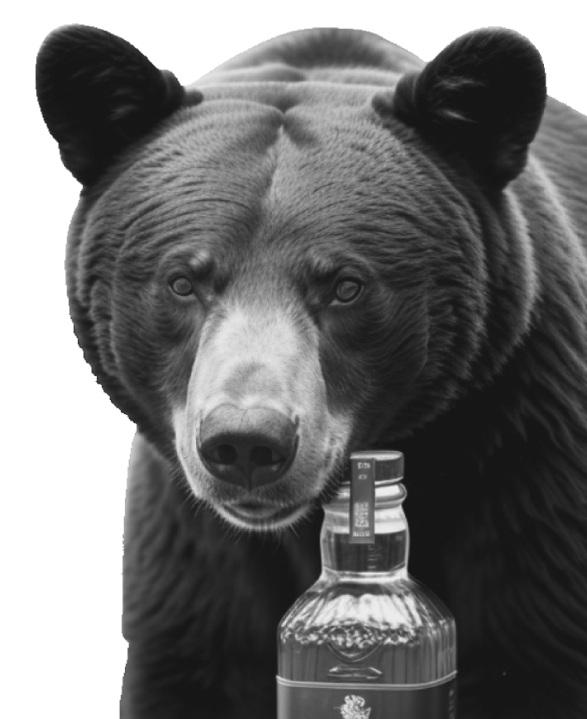

Undoubtedly the woolly worm is an awesome sight to see, especially to watch one race. But these creatures are just as entertaining to see in the wild.
Woolly worms, or also known as woolly bears, are the brown and black caterpillars of the Isabella Tiger Moth. Woolly worms can only be found in North America, located in the US and southern parts of Canada. Woolly Worms have 13 segments and three sets of legs. While most worms are a variation of brown and black banding, some worms can be completely brown or completely black. Per folklore, the color in which the bands are in order on the caterpillar determines how mild or rough the coming winter will be. Each section of the worm represents a week of winter. The darker the stripes, the harsher the weather is set to be. But after the races, the caterpillar’s life is far from over.
During the winter, the worms will find a cold dark place to hide, in which the caterpillar will create its own natural antifreeze to protect itself from the harsh cold. In the spring, the worm will thaw out and form a cocoon. Just like how a Monarch butterfly starts as a caterpillar and forms a chrysalis to eventually turn into a butterfly, the woolly worm will form a cocoon and emerge as a Isabella Tiger Moth. One fun fact is that there is a difference in the metamorphosis of the two creatures. Butterflies form a chrysalis, while moths form cocoons.
The Isabella Tiger Moth is typically yellow and orange in color, with spots and faint brown or black lines across its wings. Woolly worms have several predators such as birds, wasps and mantises, which has caused the worm to have to evolve to survive. The most apparent way is the worm’s bristles. While harmless to humans, those predators can find the bristles irritating to touch and resemble the hair of caterpillars that are dangerous or venomous, such as the Saddleback and the flannel moth caterpillars. When in danger the worm will curl up in a ball to expose only the bristles. Additionally, the caterpillar will eat plants with toxins in them which will make predators sick if the worm is eaten. This is done so that if a worm is indeed eaten, the predator gets sick, hopefully deterring the predator to think twice before
ingesting woolly worms in the future.
The following are some additional fun facts about woolly worms and the isabella tiger moth:
• Woolly worms have tiny eyes, but mainly get around by sense of touch.
• The worm’s Cryo-protectant allows it to survive in temperatures as cold as -90 degrees Fahrenheit.
• Like any moth, the caterpillars can be parasitized by wasps laying eggs on them.
• The isabella tiger moth is susceptible to many predators, ranging from spiders to bats.
• The isabella tiger moth normally only survives long enough to lay eggs, which is normally just a few weeks.
• The worm was first formally named by James Edward Smith in 1797.




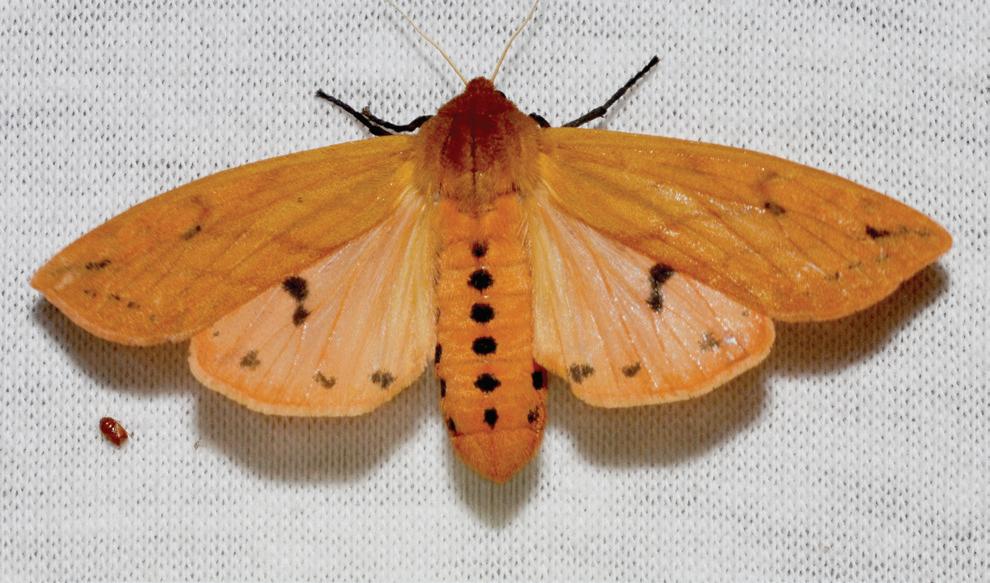

Every fall season, woolly worms from all around start to train to become the best around in the world of woolly worm racing. On the weekend of October 21 and 22, spectators from across the nation will cheer on their favorite woolly worm, while the coach is on the sidelines yelling out the game plan.
What type of training did it take to get this woolly work in top tier shape?
Our fuzzy woolly worm friends didn’t get to be the Michael Jordan or the Joe Namaths of their heats. These little guys had to go through some rigorous training. Some worms train for weeks or months to get into racing shape.
If you are wanting to enter one of your own woolly worms in this year’s Woolly Worm Festival in Banner Elk, here are some helpful tips and tricks that will get your woolly worm into the best shape for the races to come.
One of the first tips that is given to these furry competitors is to add lots and lots of stretching. Make sure to work out all three sets of legs, you don’t want to have a pulled muscle before your worm does any training or before he goes on for the race.
Getting ready for the big race is just as much mental as it is physical, so to keep your worm’s spirits up by letting it watch some motivational movies and listen to inspirational music in order to keep its spirits up and motivated for race day on October 21 and 22.
Working out can take a ton of energy out of your competitor, so make sure to keep your woolly worm hydrated by misting its enclosure. You don’t want to overhydrate your athlete, so don’t give them a water bowl, as your worm might end up drinking too much liquid. Making sure your top-of-the-line worm athlete is well fed and energized, turn your worm into Popeye the sailor by feeding them lots of greens. Dandelions, along with clovers and goldenrods, are some of every woolly worm’s favorite meals. Don’t push your worm too hard and make sure to listen to your worm when it says that it needs to take a rest. Your woolly worm knows its limits better than you do. Being encouraging will get you further than

being abrasive, as harsh words might make them roll up into a ball and shut down on you.
As a coach, you might want to give your all-star athlete the best gear, like a brand new sweat suit or the latest athletic shoes, but that is not what wins races. You might want to try and give your worm an advantage by teaching how to skate or ride a bike, but unfortunately those are banned from the races. Only caterpillars from the Isabella moth family can compete in these events. The officials at the festivals are experts and can spot a fake right away.
Regardless of how the race went, make sure to give your athlete a high five and thank you. After the race, let them become a free agent and give them an opportunity to explore what’s best for them in the open outdoors.
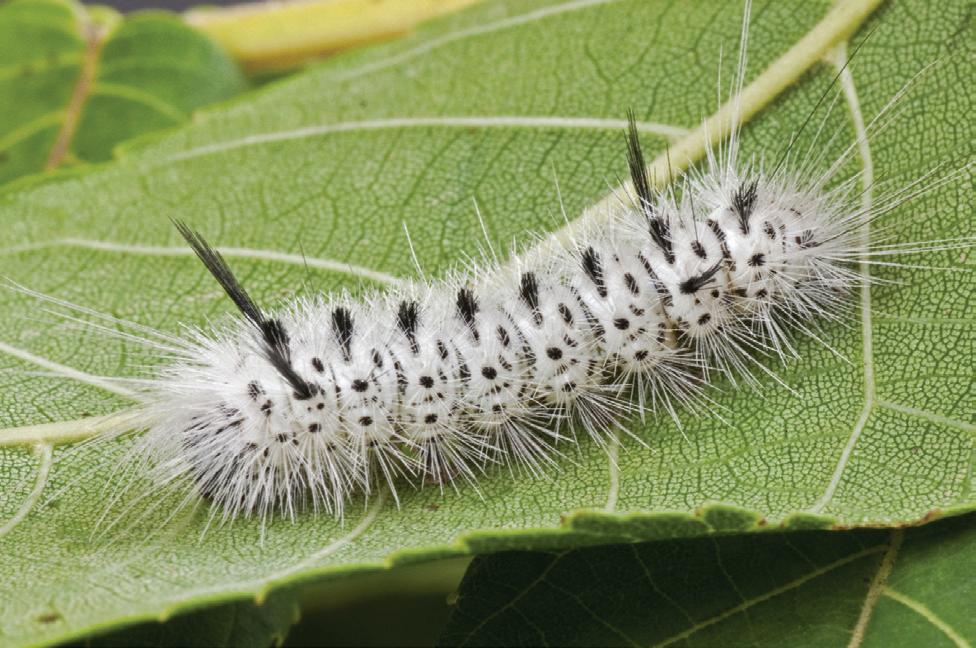
ELK — In 1973, it’s unlikely that Jim Morton ever dreamed that his fascination with woolly worms and folklore surrounding them would turn into the Woolly Worm Festival that we know of today. The Woolly Worm festival has remained a part of Avery County’s history and culture since its inception.

color patterns, it is extremely difficult to determine which worm has the right predicted outcome for the upcoming winter. Therefore, Morton came up with the races as a solution to which woolly worm they would use to get a definitive forecast.
The first Woolly Worm Festival was held at the former Banner Elk Elementary School, where it is still held today. From the first year of the festival, popularity grew so much that it garnered national attention from the media. WCYB-TV had a camera cover the first festival and footage was shared nationwide. C.J. Underwood from WBTV in Charlotte participated as the Master of Ceremonies the following year. Attendance was anywhere between 300 to 400 people. For six years, the Woolly Worm Festival Association, made up of vendors and merchants, sponsored the event. The Avery/Banner Elk Area Chamber of Commerce and the Kiwanis Club were over the operations of the event in its seventh year of being held.
the string that the worms race on, and he hoped that the woolly worm might one day get to the same level of notoriety and recognition as Punxsutawney Phil on Groundhog Day.
The Woolly Worm Festival is a great opportunity for kids and adults alike to enjoy themselves in a family friendly atmosphere. People can bring their own worms, so long as they meet the standards that they are a caterpillar of the Isabella Tiger Moth. Once arriving at the event, attendees can purchase a caterpillar at the festival. On Saturday, the winning worm will be used to forecast the weather for the upcoming winter.
This year’s Woolly Worm Festival takes place from 9 a.m. to 5 p.m. on Saturday, Oct. 21, and from 9 a.m. to 4 p.m. on Sunday, Oct. 22, at the historic Banner Elk School in downtown Banner Elk. The races start at 10 a.m. and registration is limited, so it is recommended to get to the event early to enter.
The first festival took place in 1978 and it was a small affair. A far cry from the 20,000 people who have attended the event over the past few years. In the inaugural year there were only 63 people who entered the races and three to four vendors at the festival.
Morton came up with the idea for the festival after he attended a meeting and mentioned that Banner Elk would benefit from having some type of annual event. Morton envisioned something along the lines of The Highland Games and Singing on the Mountain, mixed with Avery County’s own weather forecaster like Groundhog Day.
Similar to lore behind the Groundhog, woolly worms are said to predict the weather. The races started as a way to pick which woolly worm would predict the severity of the winter weather. Since woolly worms are different from one worm to the next and have different

Prior to his passing in 2017, Morton noted that the Woolly Worm Festival had expanded to a size greater than anyone originally thought possible, alluding to changes from the vendors and the traffic, all the way to the people attending. Morton also recognized that it takes an army to accomplish and coordinate everything at the festival. The only thing that has stayed the same Morton once stated, would be














If internet troubles from your past have yo uspooked, that’ s understandable. After all, it’s fright en in gwhen yourealize how mu ch time you’re wa sting with slow inte rnet.

WantFiber-Optic Internet? Submit yourinterestonline at https://fiber.skybest.com/ 828-898-1350 |www.skybest.com *Certainrestrictions
BANNER ELK — Thousands flocked to Banner Elk on Saturday and Sunday, Oct. 15 and 16, to partake in some wholesome family fun at the 45th annual Banner Elk Woolly Worm Festival.
The weekend’s warm weather paired with the bold oranges, yellows and reds of the peaking fall leaves made for the ideal setting for the festival –something that was demonstrated by the estimated 12,000 guests that attended the festival on Saturday, Oct. 15, alone. Along with all the festivities, tourists got to experience the full autumnal atmosphere of the High Country.
While the exact numbers haven’t yet been finalized, this year’s Woolly Worm Festival seemed to draw in especially large crowds, said Avery County Chamber of Commerce Executive Director Anne Winkelman.
“I think it was a very successful weekend,” Winkelman said. “We had the most people that we’ve had since I can remember.”
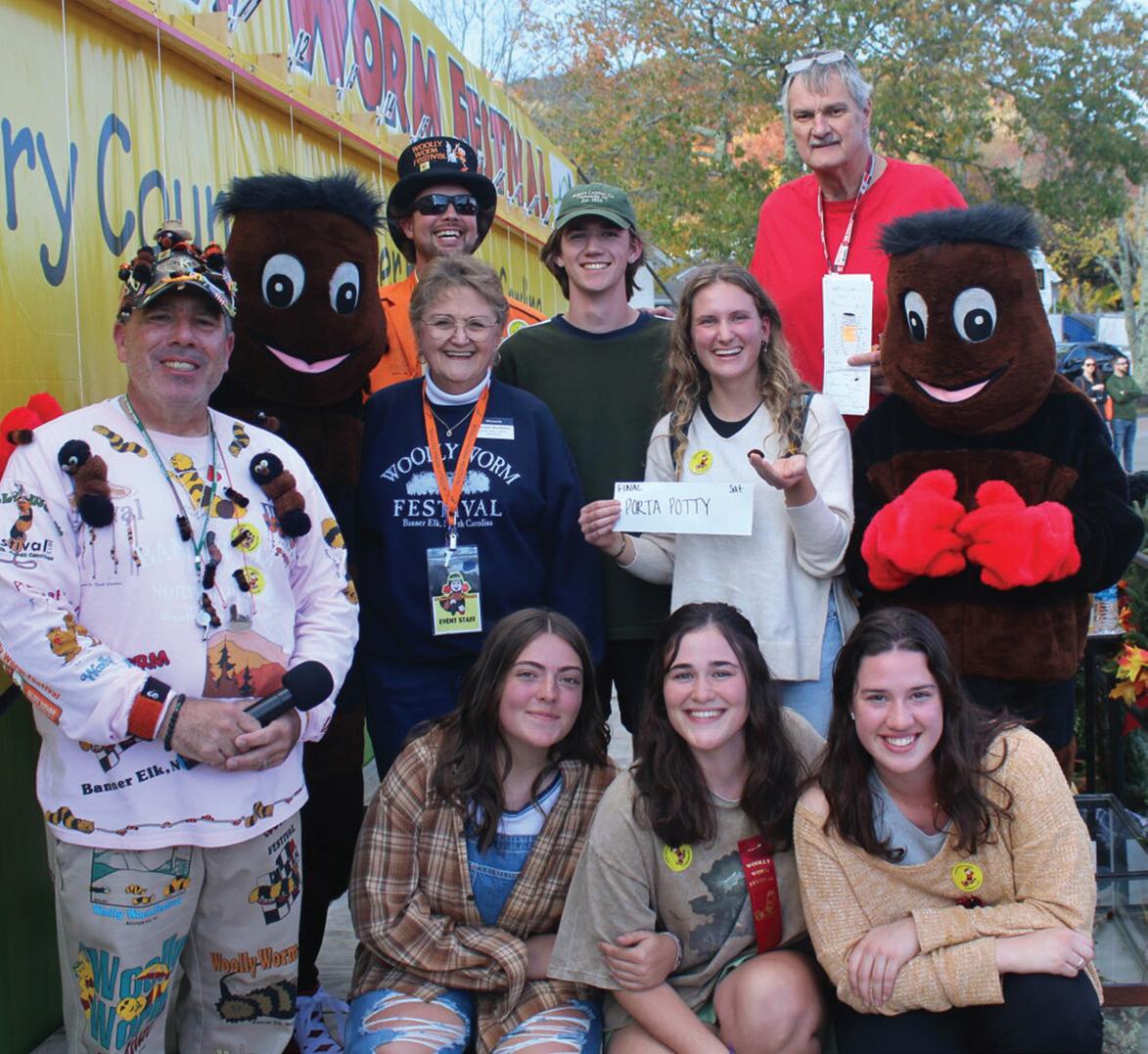
Like any large event, the Woolly Worm Festival relies heavily on support from the community and help from volunteers, from donations to setting up and tearing down, to running the event itself.
“People are just so generous in this community to help us put this together,” Mary Jo Brubaker, chair of the Woolly Worm Festival, said. “It’s a wonderful community.”
The Woolly Worm Festival, as well as the folklore behind the woolly worm itself, is enough to bring people from around the world to Banner Elk each third weekend in October. This year, guests came from as far as California and even England, Brubaker said.
“I thought it went fabulous,” she said. “We had way more people than we had anticipated, and I think everybody was just happy to leave home and get to the High Country for a beautiful weekend.”
The committee adjusted the layout of the festival somewhat to accommodate six additional vendors than it had in the past, meaning that more than 160 were able to
attend in total. Vendors from the High Country and beyond came to sell jewelry, handcrafted wood pieces, soaps, paintings, prints, leather crafts, glass art and more. One craft vendor ran out of items on Saturday, and two more ran out of items on Sunday, Winkelman said.
This year’s festival had more food vendors than previous years, Winkelman noted. From traditional fair food, such as corn dogs, funnel cakes and cotton candy, to newer options such as Famous Brick Oven Pizza and Diggy Doughnut, there was a little something for every palate at this year’s festival. Much like the craft vendors, however, two of the food vendors did so well that they ran out of food before the festival was over.
Banner Elk Garden Club created a stage for the entertainment, and decorated the stage with donations from businesses and community members, Brubaker said. Dave Calvert took care of scheduling the musical acts between both days and making sure the entertainment, which included John and Carrie Greene as ‘Elvis and Dolly,’ went smoothly.
As usual, the highlight of the weekend was Saturday’s final race. While there is always a set of races on Sunday, Saturday’s winning woolly worm is the one that predicts the weather for the upcoming winter. Additionally, the owner of the winning worm gets a $1,000 cash prize.
Tommy Burleson, Avery County’s woolly worm whisperer, performs the reading of the worm each year after the race. According to folklore, each segment of the caterpillar’s body represents one of the 13 weeks of winter. If the band is black, it means that there will be below average temperatures and snow. If the band is dark brown, it means there will be below average temperatures. A light brown band means above average temperatures, and fleck, which means the band is a mixture of black and brown, denotes that there will be below average temperatures with frost or light snow.
This year’s final race was between worms “Ding Dong Daddy,” “Karl,” “Porta Potty,” “No Snow,” “Twinkle Butt,” “Cheeze-It” and “Willie.” After winning in their own individual heats, each of the worms competed and won in their respective semifinal races to make it all the way to the finals. Ding Dong Daddy was off to a promising start at Saturday’s final race, but by the last few seconds, it was a toss-up as to which worm would finish above all the rest. The worms were neck-and-neck until Porta Potty got a boost of energy and crossed the line, winning the race.
It wasn’t over yet, however. Porta Potty had to go through one final inspection to ensure that he was in fact an isabella tiger moth caterpillar, as any other worm or caterpillar would be disqualified. After passing the inspection from the “Woolly Worm Doctor” Gary Smith, Porta Potty was officially deemed the winner of the 2022 Woolly Worm Race.
Emma Denton, owner and trainer of Porta Potty, came all the way from Gastonia to the festival. Several of Denton’s friends stood and cheered in the audience after Porta Potty won, expressing a mixture of excitement and disbelief.
Denton was awarded the $1,000 cash prize and, after posing for a few photos, Porta Potty was prepared to give the weather prediction. Adam Binder held up the champion worm while Shawn Stricklen held the microphone for
Burleson as he examined the worm.
Burleson’s reading of Porta Potty was as follows:
• Weeks 1-4: Black, below average temperatures and snow
• Weeks 5-9: Brown, average temperatures
• Weeks 10-11: Light Brown, above average temperatures
• Week 12: Fleck, below average temperatures and frost or light snow
• Week 13: Black, below average temperatures and snow
Each year’s Woolly Worm Festival doesn’t just exist for the fun of the race. The proceeds from the festival, which is organized each year through the partnership of the Avery County Chamber of Commerce and the Kiwanis Club of Banner Elk, are funneled right back into the community. The Woolly Worm Festival helps expand and enhance the education and activities for children in Avery County, and it also helps provide support for businesses and organizations in the community through grants and financial contributions.
“The school system will benefit from our grants,” Winkelman said. “We give it all back to the community, and the children will benefit in all of our schools, so it was a success all the way around.”

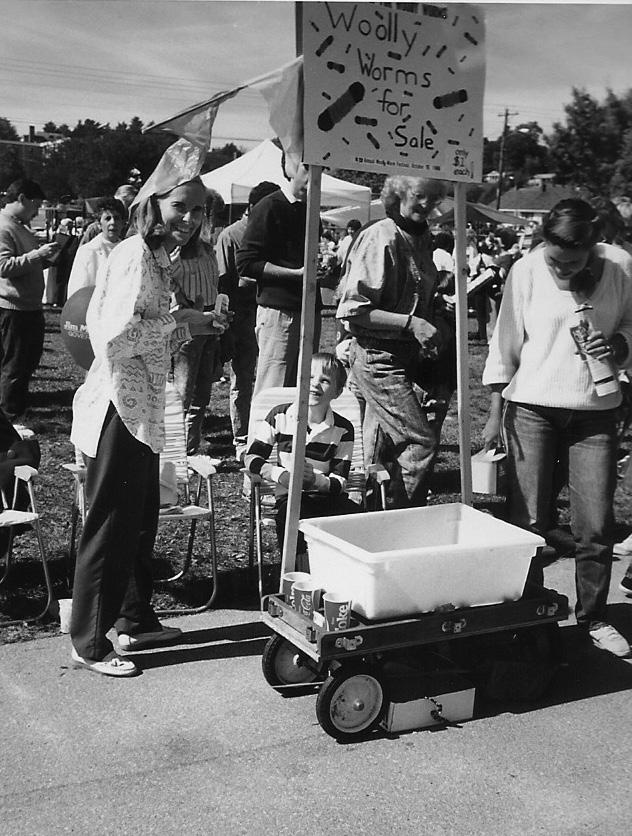
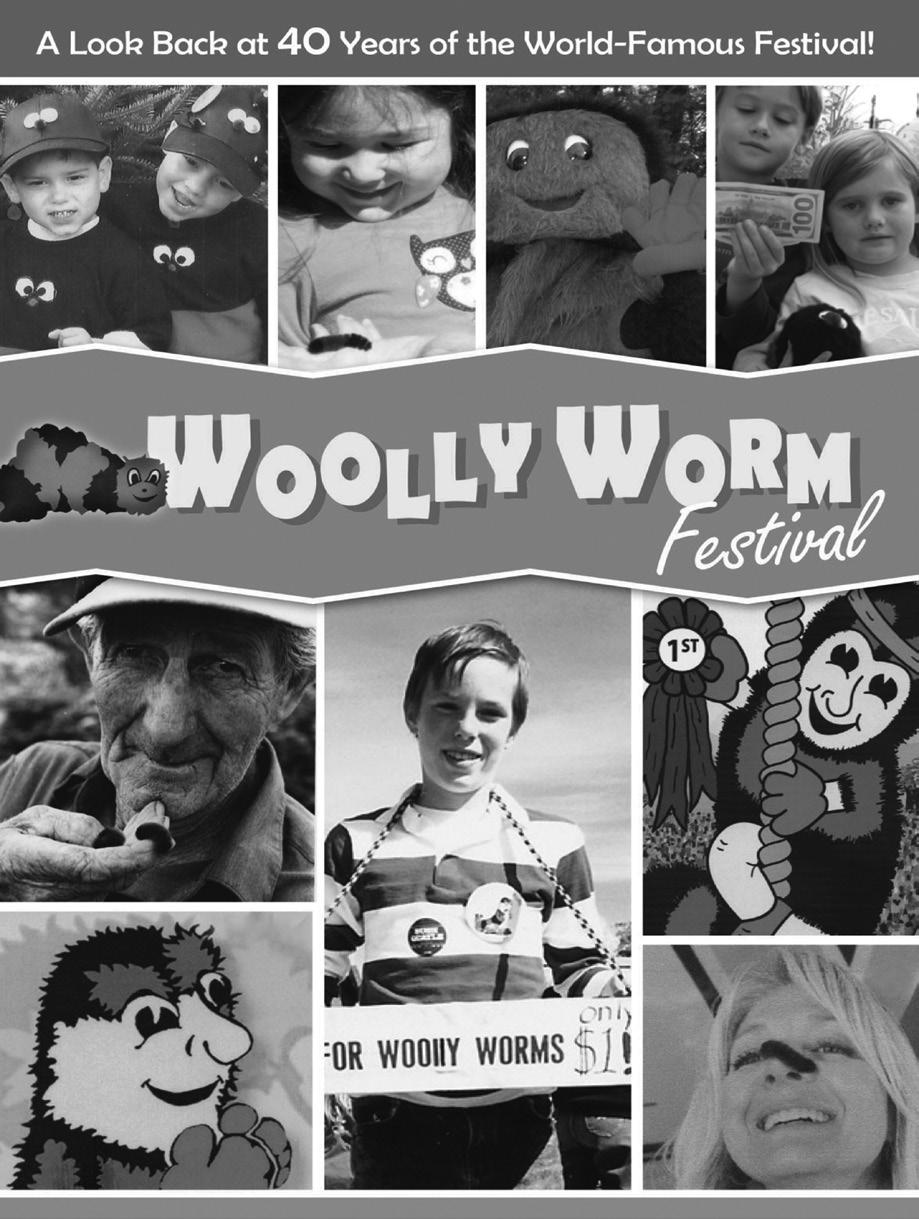
Live Music: Friday 6-9pmand Sunday 3-6pm
Open Mic: Monday from 5:30 PM
Indoor &Ourdoor Seating(PetFriendly) /Takeout
Minutes from GrandfatherMountainand LinvilleFalls
HWY 181 at Mile Marker312 on Blue
Staff Report | editor@averyjournal.com
BANNER ELK — For the past 46 years, the Banner Elk Woolly Worm Festival has been a staple of the fall season in Avery County.


Since its inception in 1978, the festival has drawn hundreds of thousands of visitors to the High Country, as well as countless dollars to benefit local nonprofit groups and civic organizations.
The staff of The AJT searched the newspaper archives for images from Woolly Worm Festivals past, highlighting

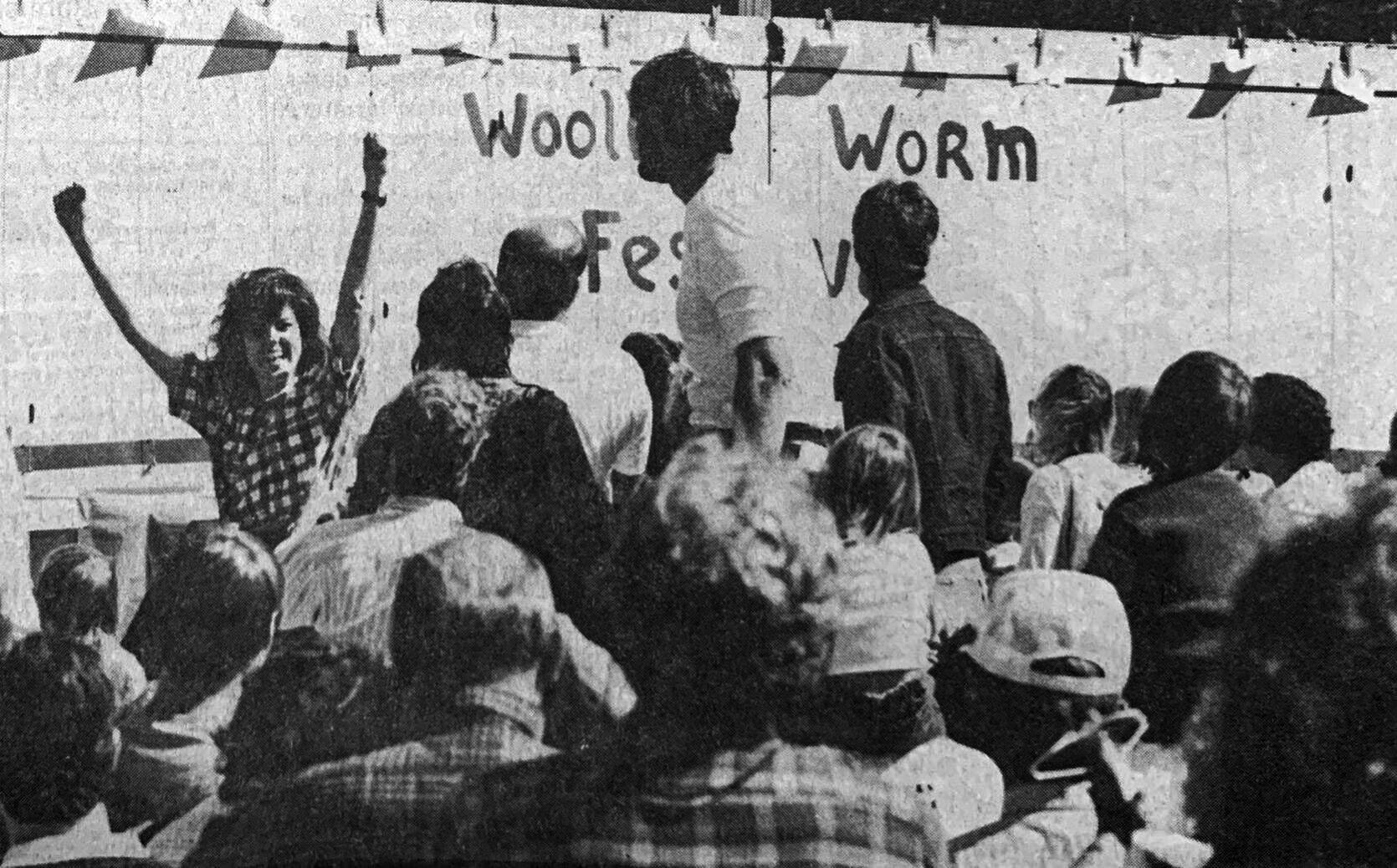

Our6th generation family farmmakes farm-fresh cheese on sitefromour ownhappydair ycows. Ourfarmstore also offers other local goods!
828-756-8166 Fri-Sat,10am-4pm, year round 19456 US 221 Nor th (.5 miles south of Linville Caverns) Marion, NC 28752
the joy and entertainment that the event represents and provides on an annual basis.
The 2023 Banner Elk Woolly Worm Festival returns to downtown Banner Elk on the third weekend in October, this year from 9 a.m. to 5 p.m. on Saturday, Oct. 21, and from 9 a.m. to 4 p.m. on Sunday, Oct. 22.

